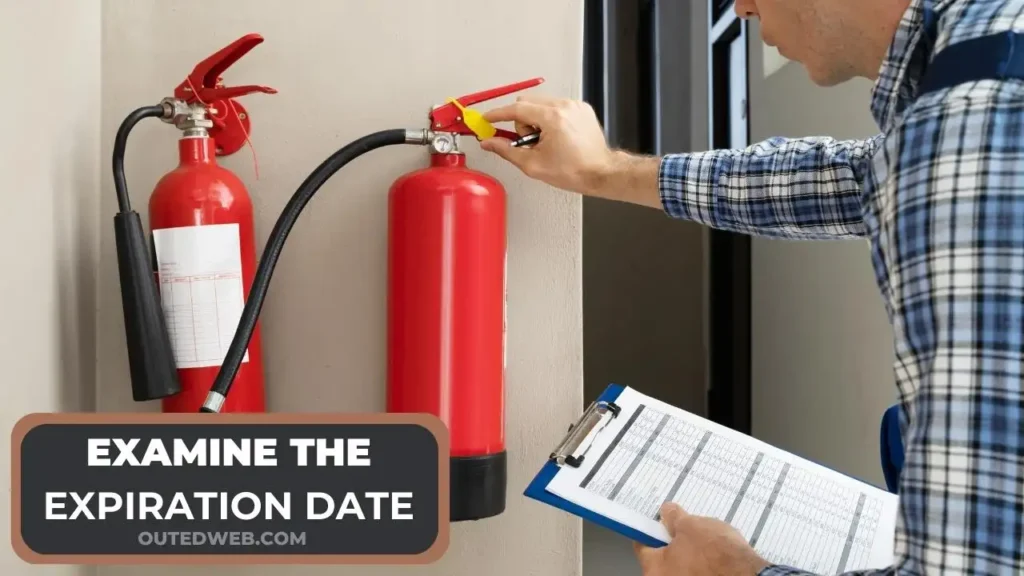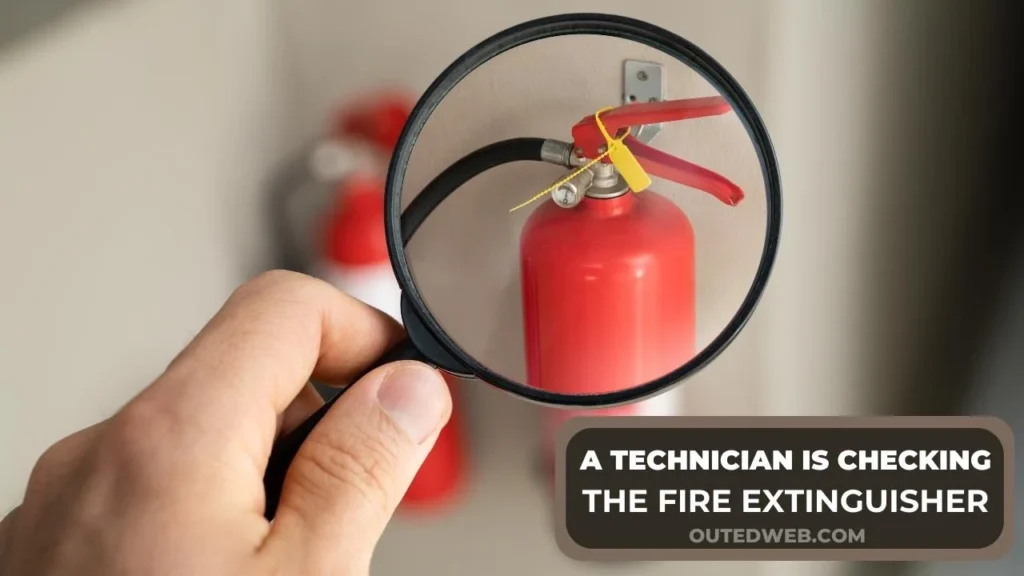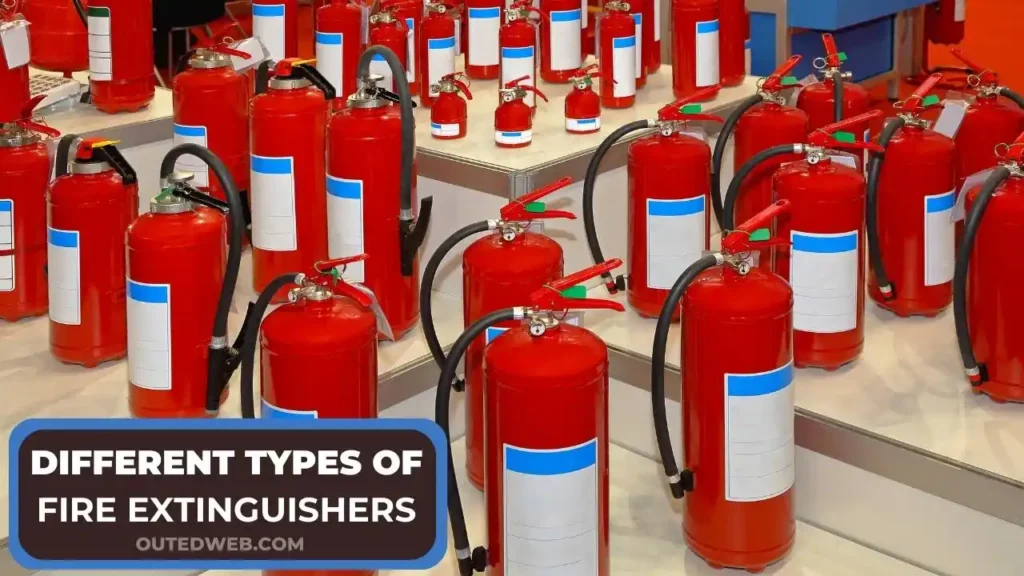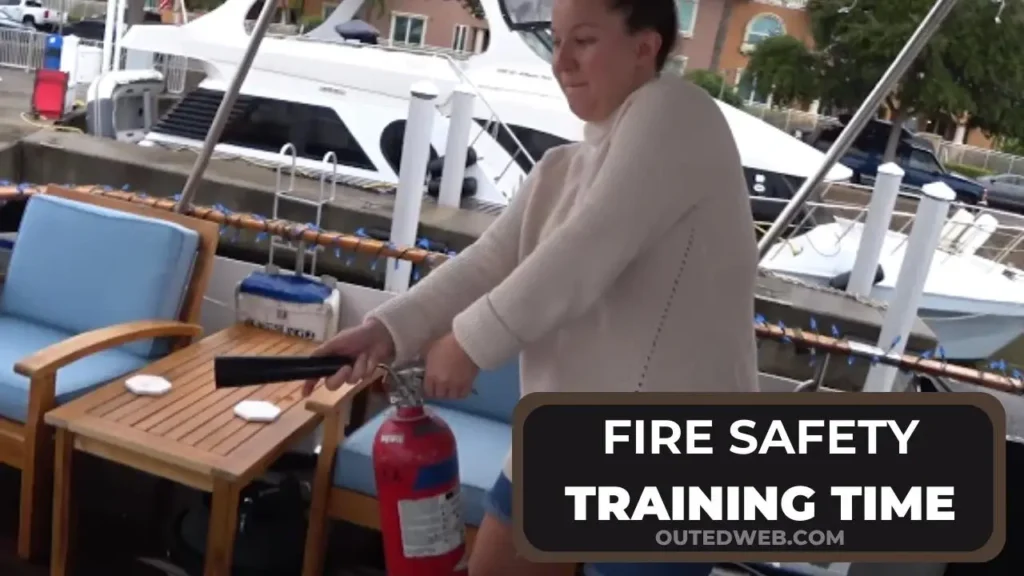You’re on your boat, having a great time on the sea. The sun shines, the breeze is refreshing, and everything seems perfect. Abruptly you observe smoke rising from the engine area.
Panic sets in as you realize you’re facing a potential onboard fire. You reach for your fire extinguisher in this critical moment, hoping it will work effectively. But how can you be certain it’s ready for action?
Fire extinguishers on boats should be checked annually, but that’s just the starting point. Annual checks are essential, but they might not be enough to guarantee your fire extinguisher will be ready when needed. Regular maintenance and periodic testing are equally vital to ensure operability.
This blog article delves deeper into how often fire extinguishers should be checked on a boat. We’ll explore the guidelines experts and regulatory bodies provided, uncover the specific inspection steps, discuss the maintenance and servicing procedures, and more. So, Let’s dive in!
Read Related Articles:
Why Is Checking Fire Extinguishers Important?
Now that we understand the critical role fire extinguishers play in boat safety, let’s explore why it’s essential to check these vital devices regularly. Ignoring or neglecting fire extinguisher maintenance can have severe consequences in the event of a fire onboard.
Ensuring Operability in Emergency Situations
You’re cruising along the tranquil waters when suddenly, a fire erupts in the galley. You must ensure your fire extinguisher will function properly in such a high-stress situation. Regularly checking your fire extinguisher ensures its proper working condition, guaranteeing its operability during an emergency.
Preventing Potential Malfunctions
Fire extinguishers are mechanical devices; like any piece of equipment, they can experience malfunctions over time. Components such as the pressure gauge, valve, and nozzle may deteriorate or become clogged.
By regularly checking your fire extinguisher, you can identify and address any potential malfunctions, ensuring that it will function optimally when needed.
Compliance with Safety Regulations
In addition to personal safety concerns, checking fire extinguishers on boats is crucial for compliance with safety regulations.
The United States Coast Guard (USCG) and local maritime authorities have particular regulations for the maintenance and inspection of boat fire extinguishers.
By conducting regular checks, you can ensure that your fire extinguisher meets the necessary standards, avoiding penalties and ensuring compliance with safety regulations.
Increasing Fire Fighting Effectiveness
During a boat fire, every second counts. The state of a fire extinguisher’s maintenance can have a significant impact on its performance.
Regular checks help ensure that the extinguisher’s pressure is within limits and contains the appropriate amount of extinguishing agent.
This maximizes the fire-fighting capability, allowing you to tackle a fire more effectively and potentially minimize the damage caused.
Peace of Mind and Confidence
Peace of mind is priceless while you’re out on the lake having a good time with your loved ones. You can ensure the preparedness and operation of your fire extinguisher by routinely inspecting it.
You may feel secure and truly take pleasure in your boating experience when you know that you have taken the required safety measures to safeguard your loved ones and your vessel.
What Are the Guidelines for Checking Fire Extinguishers on Boats?
When it comes to boating, safety should always take precedence. Fire extinguishers are essential onboard devices that are critical in mitigating fire-related risks. Here are some guidelines for checking boat fire extinguishers.
Visual Inspection
The first step in checking your fire extinguisher is performing a thorough visual inspection. Start by examining the exterior of the extinguisher for any signs of physical damage, corrosion, or leakage.
Check the pressure gauge to verify it is within the acceptable range. Look for any obstructions in the nozzle or discharge hose that could hinder the proper operation of the extinguisher. Additionally, inspect the safety pin and tamper seal to ensure they are intact.
Check the Extinguishing Agent
Next, ensure that your fire extinguisher’s extinguisher’s chemical is still functional. Shake the extinguisher gently to prevent the powder from settling, and then weigh it to ensure that it meets the recommended weight specified by the manufacturer.
The extinguisher has to be changed or recharged right away if the weight drops below the acceptable level since it can signify a leak or discharge of the extinguishing chemical.
Examine the Expiration Date
Fire extinguishers have a limited lifespan, often ranging from 10 to 12 years, depending on the model. Check the label on the extinguisher for the expiration date or the manufacturing date, which can help determine its age.

Suppose the extinguisher has exceeded its recommended lifespan. In that case, replacing it with a new one is crucial, as the internal components may deteriorate over time, rendering it ineffective in combating fires.
Ensure Accessibility and Mounting
Easy access to fire extinguishers may make a significant difference during an emergency. Check that the extinguisher is mounted securely in its designated location, typically near high-risk areas such as the engine compartment or the galley. Ensure that it is easily visible and reachable and that no obstructions hinder its accessibility.
Annual Inspection of Fire Extinguishers
In addition to regular visual inspections and maintenance, conducting an annual inspection of your fire extinguishers on boats is crucial. This comprehensive examination ensures that your extinguishers are in optimal condition and ready to tackle any fire emergency that may arise.
Hire a Certified Technician
When it comes to an annual inspection, hiring a certified technician specializing in fire safety equipment is advisable.
These professionals possess the knowledge and expertise to examine your fire extinguishers thoroughly.
They are trained to identify potential issues and ensure your extinguishers meet safety standards and regulatory requirements.

Examine Internal Components
During the annual inspection, the certified technician will thoroughly disassemble the fire extinguisher to inspect the internal components.
They will check the pressure vessel’s integrity, including the cylinder, valve, and discharge mechanism.
This examination ensures that all components are functioning correctly and free from any damage or wear that could compromise the extinguisher’s effectiveness.
Hydrostatic Testing
One critical aspect of the annual inspection is hydrostatic testing, which is required for certain types of fire extinguishers. This testing involves pressuring the extinguisher to verify its structural integrity and detect potential leaks or weaknesses.
The certified technician will conduct the hydrostatic test, usually using specialized equipment, to ensure the extinguisher can withstand the necessary pressure levels.
Recharging or Replacement
During the annual inspection, the technician will assess the remaining extinguishing agent in the fire extinguisher. If the agent has been partially or fully discharged, the technician will recharge the extinguisher to the appropriate level.
If the agent is no longer effective or the extinguisher has beyond its expiration date, the technician will advise replacing it with a new one.
Documentation and Certification
Upon completing the annual inspection, the certified technician will provide you with a detailed report documenting the findings and any necessary actions taken.
This documentation serves as proof of compliance and can be invaluable during safety inspections or audits.
For future reference, it is essential to maintain these documents in a secure, simple location to get to.
Fire Extinguishers Maintenance
To maintain the long-term dependability and efficacy of fire extinguishers aboard boats, adequate maintenance and routine inspections are essential. Here are some key maintenance procedures to consider:
Cleaning: Periodically clean the exterior of the extinguisher using mild detergent and water. Avoid using abrasive cleansers or chemicals that may harm the surface. This helps remove dirt, dust, and other contaminants that could affect the extinguisher’s performance.
Storage Conditions: Ensure fire extinguishers are stored appropriately to prevent damage and deterioration. They should be stored out of direct sunlight and extremely hot or cold temperatures in a dry place that is simple to get to.
Accessibility: Regularly check that the fire extinguishers are easily accessible and not obstructed by any objects. In the event of an emergency, this ensures that they can be swiftly accessed.
Types of Fire Extinguishers for Boaters
Regarding fire safety on boats, having the right type of fire extinguisher is essential. Now, we’ll look at the many sorts of boat fire extinguishers and the specific flames they’re built to put out. Understanding these types will help you make informed decisions when selecting the appropriate extinguishers for your vessel.
Class A Fire Extinguishers
Ordinary flammable items, including wood, paper, cloth, and plastics, are among the materials that Class A fire extinguishers are intended to put out. Solid objects that may burn are present in these flames, distinguishing them. Class A fire extinguishers of the following type are the most popular:
Dry Chemical Fire Extinguisher: These extinguishers use a dry chemical agent, typically mono ammonium phosphate, to suppress Class A fires. They work by smothering the fire, interrupting the chemical reaction and heat transfer. Dry chemical extinguishers are versatile and suitable for a wide range of boating applications.
Class B Fire Extinguishers
Class B fire extinguishers are made to put out flames caused by combustible substances, including alcohol, gasoline, oil, and diesel. These fires are characterized by liquids or liquefiable solids that can ignite easily. The most common types of Class B fire extinguishers for boaters are:
CO2 extinguishers work by displacing oxygen and removing heat from the fire, effectively smothering it. They are suitable for Class B fires and are non-conductive, making them safe to use around electrical equipment commonly found on boats.

Foam Fire Extinguisher: Foam extinguishers create a foam blanket that helps to smother the fire and prevent re-ignition. They are effective against Class B fires and can suppress Class A fires. Foam extinguishers are not recommended for use on electrical fires.
Class C Fire Extinguishers
Class C fire extinguishers are designed for fires involving energized electrical equipment, such as wiring, circuit breakers, and electrical appliances. These fires are characterized by the presence of electrical components that are conducting current. The most suitable type of fire extinguisher for Class C fires on boats is:
Clean agent extinguishers use chemicals that do not leave a residue, making them safe to use around sensitive electrical equipment. They work by interrupting the chemical reaction and cooling the fire, effectively extinguishing it. Clean agent extinguishers are also suitable for Class A and Class B fires.
Considerations
There are a few other factors to bear in mind while choosing fire extinguishers for your boat:
Size and Quantity: When deciding the number and size of extinguishers necessary, consider the size and configuration of your yacht. Larger boats may require multiple extinguishers strategically placed for easy access.
Mounting and Accessibility: Ensure fire extinguishers are placed correctly in suitable brackets or holders to remain secure while being transported. They ought to be simple to go to in case of an emergency.
Coast Guard Approval: Look for fire extinguishers approved by the U.S. Coast Guard (USCG). These extinguishers meet specific safety standards and are suitable for marine use.
Additional Considerations
Boaters should take a few more things into account to improve their fire safety preparation. Let’s look more closely at these crucial elements.
Placement and Accessibility
Regarding boat fire safety, the positioning and accessibility of fire extinguishers are crucial. Consider the following guidelines:
Strategic Placement: Install fire extinguishers in easily accessible locations throughout your boat. Common areas include the galley, engine compartment, and near the helm. Ensure they are visible, unobstructed, and within reach in case of an emergency.
Mounting Options: Use designated brackets or holders to mount fire extinguishers securely. This prevents them from shifting or falling during rough waters, ensuring they remain in place when needed.
Signage and Awareness: Label the location of fire extinguishers with clear signage to facilitate quick identification. In addition, ensure that all passengers and crew members know the placement and correct use of fire extinguishers in case they need help in an emergency.
Fire Safety Equipment and Preparedness
Aside from fire extinguishers, there are other fire safety equipment and preparedness measures boaters should consider:
Fire Blankets: Fire blankets are designed to smother small fires, particularly those involving cooking equipment or clothing. Keep a fire blanket in the galley area for quick access.
Smoke Detectors and Alarms: Install smoke detectors and fire alarms in key areas of your boat, such as cabins and engine compartments. Regularly test and maintain these devices to ensure they are in proper working order.
Fire Suppression Systems: Larger boats or those with enclosed engine compartments may benefit from installing automatic fire suppression systems. These systems use various agents, such as clean agents or foam, to suppress fires effectively.
Fire Safety Training And Education
Investing time in fire safety training and education can significantly enhance your preparedness and response during an emergency. Consider the following:
Basic Fire Safety Training: Familiarize yourself and your staff with fundamental fire safety principles, like fire prevention, extinguisher usage, and evacuation protocols. Many boating organizations offer courses or resources on fire safety specific to the marine environment.

Emergency Drills: Conduct regular emergency drills to practice fire response scenarios. This allows everyone on board to become familiar with their roles, evacuation procedures, and the proper use of fire safety equipment.
Stay Informed: Keep up to current on the most recent fire safety legislation, guidelines, and best practices for boating. This guarantees that you are informed of any modifications or developments in fire safety technologies and may adjust your safety measures accordingly.
Final Say
Keeping your boat and everyone on board safe should always be a top priority. Regularly checking and inspecting fire extinguishers is crucial for maintaining their effectiveness and reliability. You may be confident in your fire extinguishers’ capacity to guard against possible fires by following the manufacturer’s specifications, completing yearly inspections, and swiftly fixing any faults.
Additionally, understanding the different types of fire extinguishers, implementing proper maintenance and servicing procedures, and considering additional fire safety measures will further enhance your preparedness. This includes strategic placement, accessibility, awareness, and investing in fire safety training and education.
Remember, prevention is key. Practice good fire safety habits, such as minimizing fire hazards, being cautious with electrical systems, and storing flammable materials properly. By adopting these preventative actions, you may dramatically minimize the chance of a fire on your boat and safeguard the safety of yourself, your guests, and your vessel. Stay safe, and happy boating!

